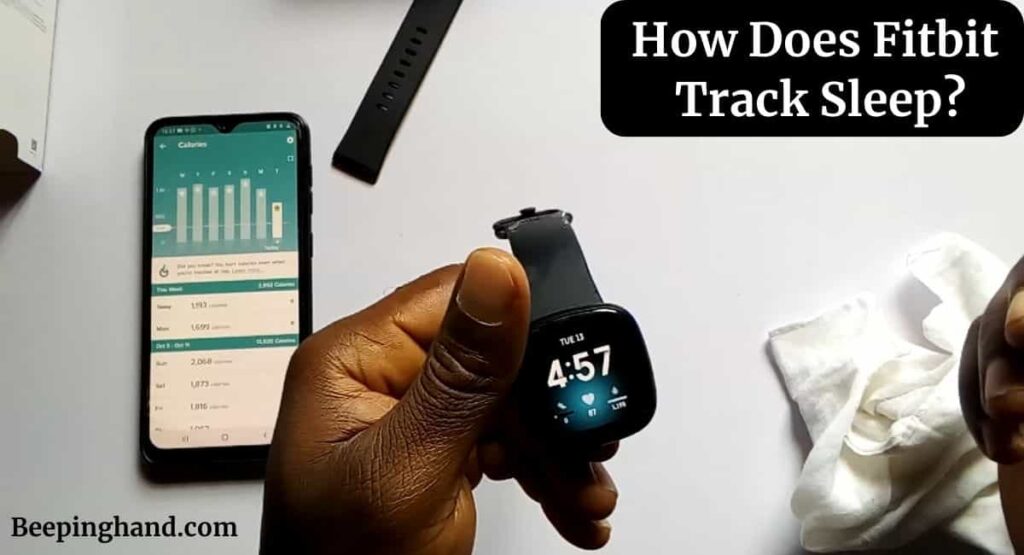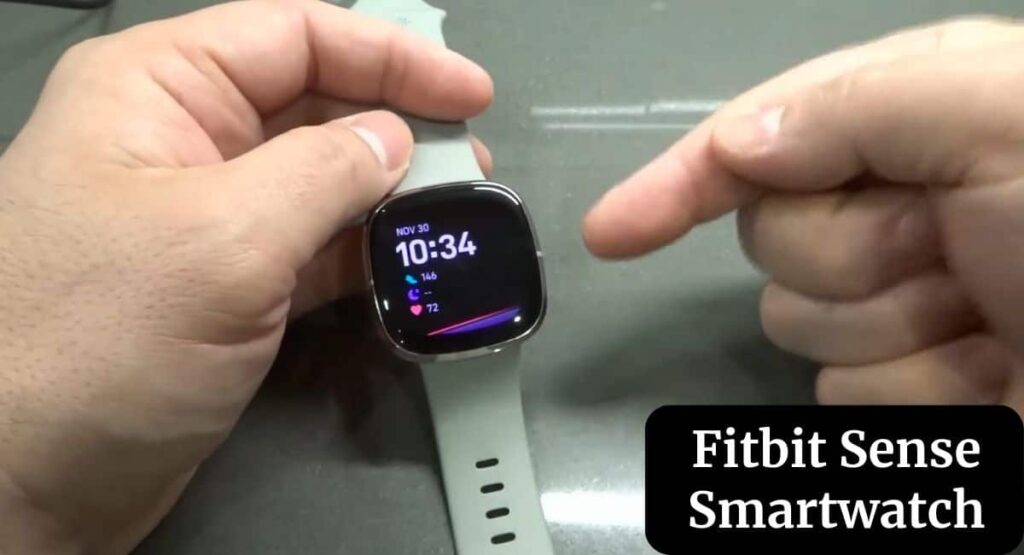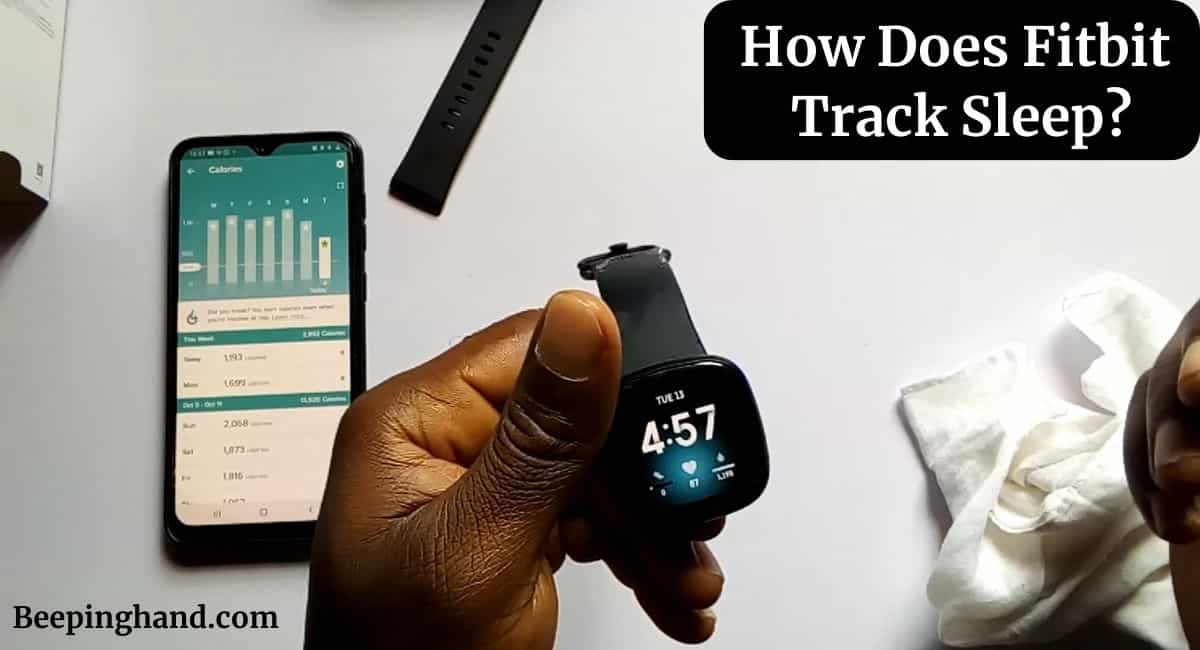Sleep is a vital aspect of our overall well-being, and understanding the quality and patterns of our sleep can help us make informed decisions to improve our rest. Fitbit, a popular wearable technology company, offers sleep-tracking features that provide valuable insights into our sleep habits.
Here, we will explore How Does Fitbit Track Sleep and how it can help optimize our sleeping patterns. So, keep reading this article completely.
How Does Fitbit Track Sleep

If you are curious to know everything about how Fitbit Sleep Tracking works then you have come to the right place.
Understanding Sleep Tracking
Sleep tracking involves monitoring various aspects of your sleep, such as sleep duration, sleep stages, and sleep quality. Fitbit devices utilize advanced sensors and algorithms to track and analyze your sleep patterns throughout the night.
By wearing a Fitbit device on your wrist, you can gain valuable information about your sleep quality and make adjustments for better rest.
Fitbit Sleep Tracking Technology
Fitbit employs a combination of technologies to accurately track sleep. These technologies include movement detection, heart rate monitoring, and environmental factors –
Movement Detection
Fitbit devices use an accelerometer to detect movement during sleep. The accelerometer measures changes in your wrist’s position and movement patterns. By analyzing these movements, Fitbit can determine when you are awake, in light sleep, deep sleep, or REM sleep.
Heart Rate Monitoring
Fitbit devices equipped with heart rate sensors also monitor your heart rate during sleep. Changes in heart rate can provide insights into different sleep stages. For example, during REM sleep, your heart rate may increase, indicating vivid dreaming and heightened brain activity.
Environmental Factors
Fitbit takes into account environmental factors that may affect your sleep quality. It considers ambient light levels and noise levels in your sleeping environment, which can impact the quality of your sleep.
Sleep Stages and Analysis
Fitbit categorizes sleep into several stages, each with its own characteristics and benefits. Understanding these stages can help you identify areas for improvement in your sleep routine –
Light Sleep
Light sleep is the stage between being awake and entering deeper sleep. During this stage, your body prepares for deep sleep. It is easier to wake up during this stage, and it generally comprises a significant portion of your overall sleep duration.
Deep Sleep
Deep sleep is the stage where your body undergoes physical and mental restoration. It plays a crucial role in memory consolidation, tissue repair, and hormone regulation. Deep sleep is essential for feeling refreshed and energized upon waking up.
REM Sleep
REM (Rapid Eye Movement) sleep is associated with vivid dreaming and heightened brain activity. It plays a critical role in learning, memory formation, and emotional processing. REM sleep is typically characterized by rapid eye movements and temporary paralysis of major voluntary muscles.
Awake Time
Awake time refers to periods when you are awake or restless during the night. Fitbit tracks these instances and provides insights into the duration and frequency of your awakenings. Minimizing awake time can contribute to more restful sleep.
Sleep Score and Insights

Fitbit provides a sleep score based on your sleep duration, sleep stages, and other factors. This score helps you understand the overall quality of your sleep. Additionally, Fitbit offers insights and personalized tips to improve your sleep quality based on the data collected.
Improving Sleep Quality with Fitbit
Fitbit not only tracks your sleep but also offers features to help you improve your sleep quality. Here are some ways Fitbit can assist in optimizing your sleep routine –
Sleep Schedule and Routine
Fitbit allows you to set a consistent sleep schedule and reminders to establish a regular sleep routine. A consistent sleep schedule can help regulate your internal body clock and promote better sleep quality.
Sleep Environment
Fitbit offers features that help you create an ideal sleep environment. For example, it can provide insights into the impact of noise and light levels on your sleep. With this information, you can make adjustments to create a more conducive sleeping environment.
Sleep Goals and Tracking
Fitbit enables you to set sleep goals and track your progress over time. By setting goals, you can establish targets for sleep duration and quality, making it easier to monitor your progress and make necessary adjustments.
Wrapping Up
This article is all about How Does Fitbit Track Sleep. Fitbit’s sleep tracking technology provides valuable insights into your sleep patterns and helps you optimize your sleep quality. By understanding your sleep stages, sleep duration, and other factors, you can make informed decisions to enhance your overall well-being. With Fitbit, you have the tools to improve your sleep routine and achieve better rest.
I hope this article was helpful to you and if you still find any queries then you may ask in the comment box. For more information visit the Help and Support Page.
FAQ’s How Does Fitbit Track Sleep
How accurate is Fitbit sleep tracking?
Fitbit sleep tracking is generally considered to be accurate, but it may have some limitations. Factors like device placement and personal sleep habits can affect accuracy.
Can Fitbit track naps?
Yes, Fitbit can track naps. It automatically detects periods of sleep during the day and provides insights into nap duration and quality.
Can Fitbit differentiate between light and deep sleep?
Yes, Fitbit utilizes various data points, including movement and heart rate, to distinguish between light and deep sleep stages.
Does Fitbit work if you share a bed?
Fitbit can still track your sleep if you share a bed. It focuses on the movement and heart rate data specific to your wrist to provide accurate sleep tracking.
